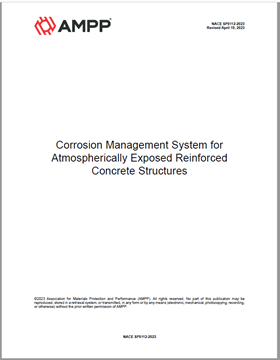Search
Products tagged with 'atmospherically exposed'
View as
Sort by
Display
per page
NACE SP0112-2023, Corrosion Management System for Atmospherically Exposed Reinforced Concrete Structures
Product Number:
NACE SP0112-2023
Publication Date:
2023
$109.00
NACE SP21459-2020/IEEE Std 2655-2018, “Atmospheric Above Grade Inspection and Assessment of Corrosion on Steel Electrical Transmission, Distribution, and Substation Structures”
Product Number:
SP21459-2020
ISBN:
1-57590-408-X
Publication Date:
2020
$109.00


